N3L Stands for Newton’s 3 Laws which seems to be at least part of their central philosophy. For those of you that are not familiar with Newton and his three famous laws they are here below as listed on N3L’s own material;
1. Every action has an equal and opposite reaction.
2. An object will stay at rest or continue at a constant velocity unless acted upon by an external unbalanced force.
3. The net force on a body is equal to its mass multiplied by its acceleration.
Now I know you are wondering what this has to do with sports eyewear. Well we thought the same thing until we paid a visit to one of their stores. As I walked into the N3L Optics in the Mall of Millenia (in Orlando) I was greeted by s sale representative right away. At this point they did not know I was there to talk to them about how they did business so it was a nice touch. It also fit into Newton’s second law. I was not allowed to just wander aimlessly around the store (and right back out the door). Instead by greeting me and directing me I was now engaged in the process.
After the introductions were made Cameron gave me a quick tour of the store. It looked like most sunglass or sports eyewear stores with a few exceptions. Cameron explained that at N3L Optics they work with the customer to find the right eyewear by identifying the use they will be put to. To do this they have a large touch screen monitor called the Immersive Display.
This display is used to filter out lenses and frames that will not work well for the application you want to use them for. Once you select your activity it will give you a listing of the type of lenses and frames that will best suit that activity. From there you can take this list and compare each on the display. The display is touch screen so you simply have to touch the scene and then the frame/lens selection to see a simulation of what it will look like when in use. You can setup multiple selections to compare them using the same scene. If you need more information you can select the individual glasses and get detailed information direct from the company’s website.
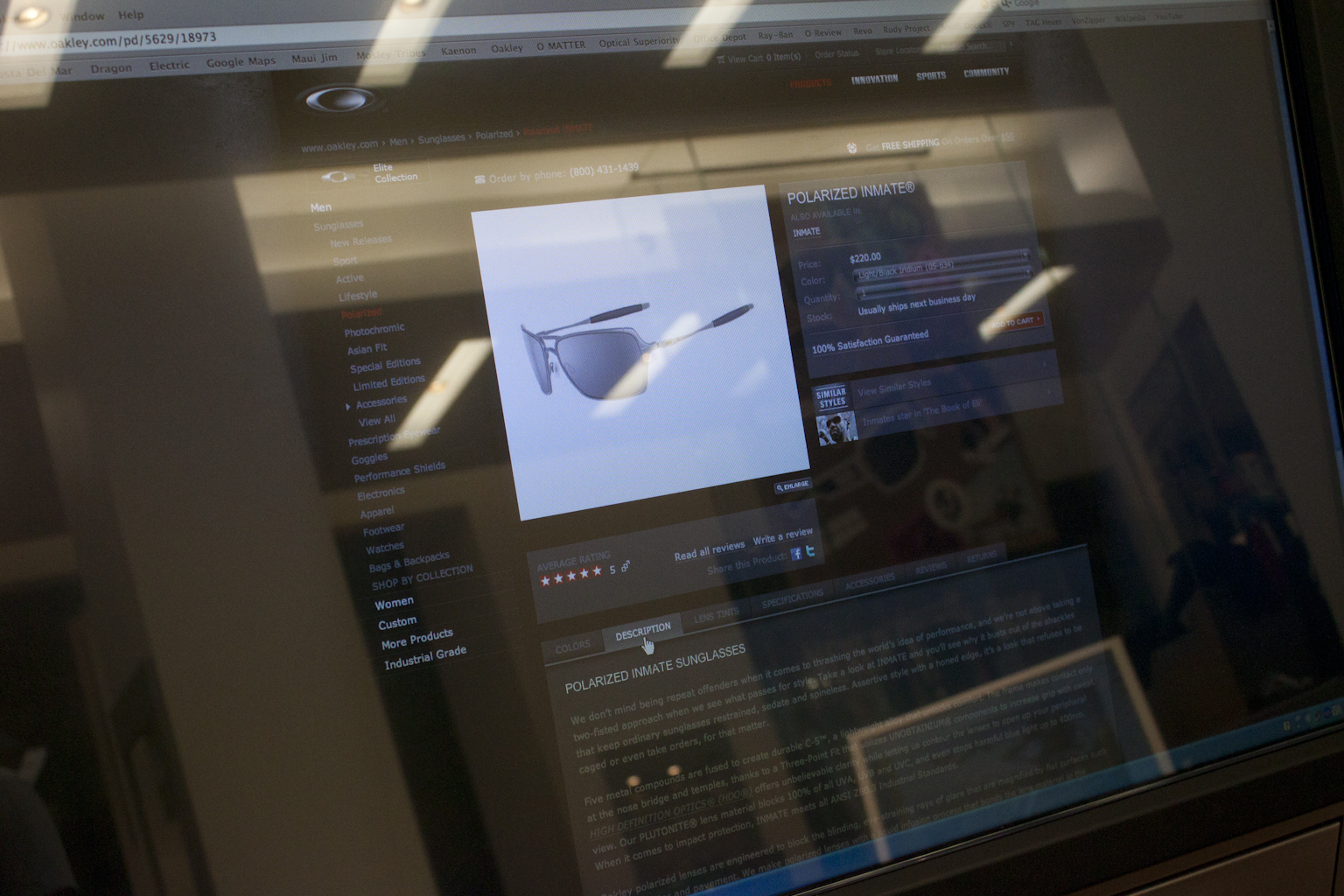
In my case I was looking for something that would work well for hiking, biking, kayaking and driving. Cameron walked me through the process and selected Kayaking as the main activity. I asked the reasons behind this and he explained that it contained the best blend of the all of my common activities. With my choice of activity set the system gave me a few options. These were different brands and lens types although the majority of the lenses were polarized. There were brands that I had never heard of and, in another store, might not have even considered.
With a list of options in hand Cameron walked me over to the display shelves to see each in person. Out of the original group of six Cameron and I selected using the Interactive Display I picked out three with different lens and frame styles and we headed off to the second step in the process.
This step is called the Explorer Chamber. The Explorer chamber takes the experience with the Interactive Display one step further. Now that you have seen the real thing (actually have some of the sunglasses in hand) you can now see how they feel and work in a simulation of real world situations.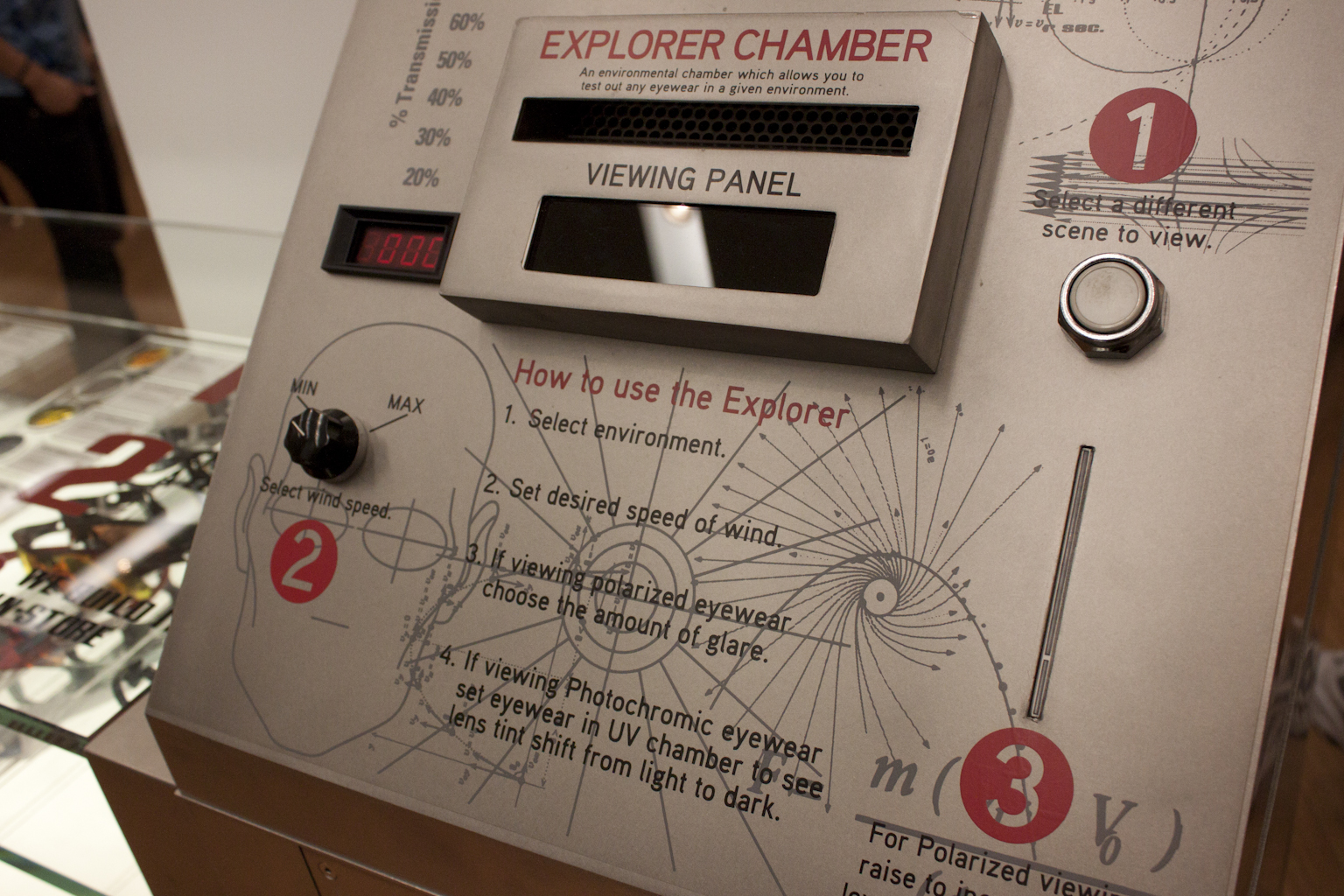
The Explorer Chamber allows you to view several different scenes at an accurate focal length (to make the feel of the scene more realistic). Once you have selected a scene you can then change the amount of glare by increasing the brightness while adding a little wind using another dial. You can even test out photochromic eye wear by bombarding it with UV light in a chamber on the front that is affectionately called the oven.
The overall effect of the Explorer Chamber is impressive, until this moment I had never been given a realistic example of how polarized lenses have an impact on my choice of eyewear. When I picked up my last pair of glasses (Oakley Jawbones) I was given a very brief demonstration of polarized lenses. It consisted of wearing a pair of glasses and looking at a piece of Plexiglas that had the store’s logo on it (a competing store). This logo was not visible using neutral lenses but only with the polarized ones. Now this demo was not impressive and did nothing to make me want to spend the extra money (about $80) to get polarized lenses. With the approach taken by N3L Optics I was able to compare the three types of lenses I had picked out with different scenes, different lighting levels and even add wind into it to make find out how much coverage I could expect from each of my selections. I instantly saw the effect the polarized lenses had on clarity and focus. I also found out first hand that the lens tint was important. I had read about and heard about high contrast tints (usually amber) but had always thought it was just a marketing ploy. After using the Explorer Chamber I now know that the amber tint is not a marketing ploy at all. The difference was dramatic; looking at one scene, composed of a mass of clouds, without any of the glasses all I saw was a hazy white blob with little detail. With a neutral lens I was able to see a little better but there was still no detail and the color clarity was not good at all. It was not until I put on the amber polarized lenses that everything became clear. Again without this simple device I would never have known this.
During my “play-time” with the Explorer Chamber I did not feel rushed. Cameron was available to answer my questions but did not pressure my in anyway. It was a very different type of experience. Of course I did have some questions for Cameron. Most of these I asked to see what the level of knowledge was and also to see if I was being misled. Cameron not only answered all of my questions but also had additional details about each that made the answer less technical and would have been very easy to understand by the average person. Cameron was also very knowledgeable about the products in the store. One of my candidates was a company called Revo. Now I had never heard of Revo but Cameron was able to fill me in on the company, their technology (how they made the lenses and frames) and compare them directly with manufacturers that I knew and trusted.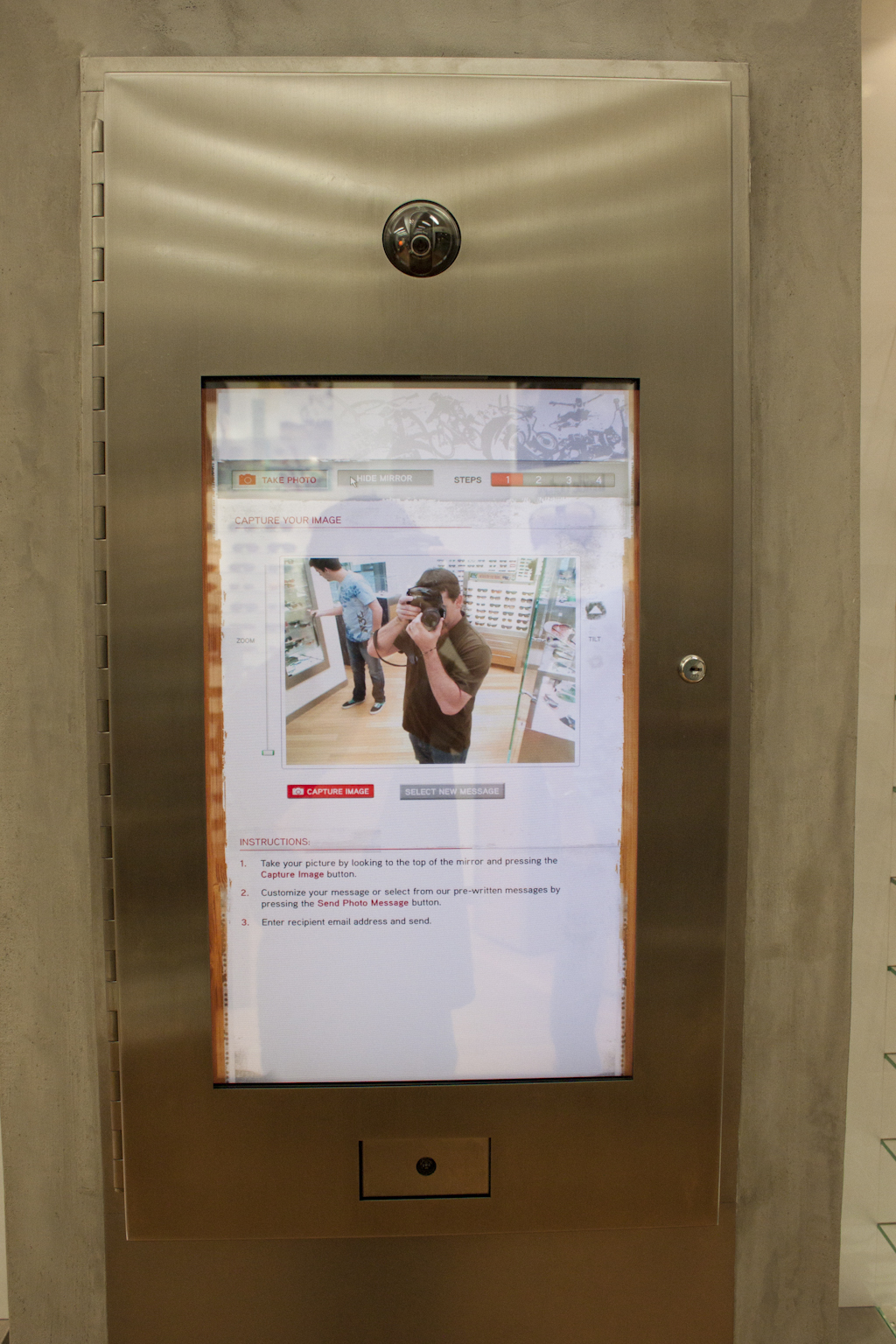
The last step in the customer experience had me laughing when I saw it; it is as simple a touch as an interactive mirror with a proximity sensor (RFID) that knows when someone it near it. As soon as you walk into the detection field the system starts up. A camera at the top (with a downward angle of around 60 degrees) gives you an image of yourself wearing a pair of glasses and the ability to send that picture to an e-mail address. You can also add a personalized message or a canned one. They way Cameron put it “this is so you can get approval of your choice from your wife if needed” It made me smile when I thought of the times I did not buy a pair of glasses because I was not sure it they really looked good on me or I just thought they did.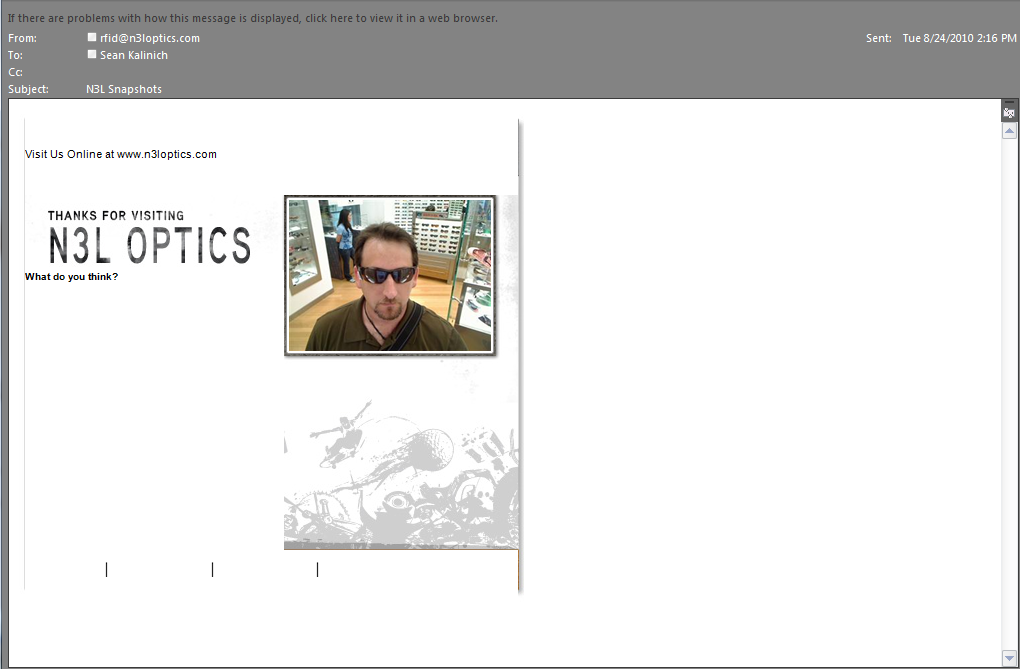
While we were waiting on... cough* a response to the e-mail I sent I talked more with Cameron about N3L Optics and the way they conduct business. Cameron informed me that they were a very different type of retail store; he let me know that I would never see a sale happening at N3L. The reason is that sales are meant to get rid of old and out dated technology. This was something that N3L would not do; they were all about offering the most current technology in eyewear. If they could not sell it before it was outdated, they would send it back to the manufacturer. As an example Cameron showed me a pair of Tag Heuer glasses. These glasses, he told me, are specially designed for night driving. The amber lens offers a higher contrast while the actual glass is curved to help reduce the effect of night myopia this is when the eye become temporarily nearsighted during low light conditions. The reason for this condition (in very simple terms as I am not a doctor) is that as the pupil dilates it becomes more refractive and also changes shape slightly due to the larger pupil surface (sometimes referred to as spherical aberration). This causes the focal length of the eye to shorten making items at a longer distance appear fuzzy.
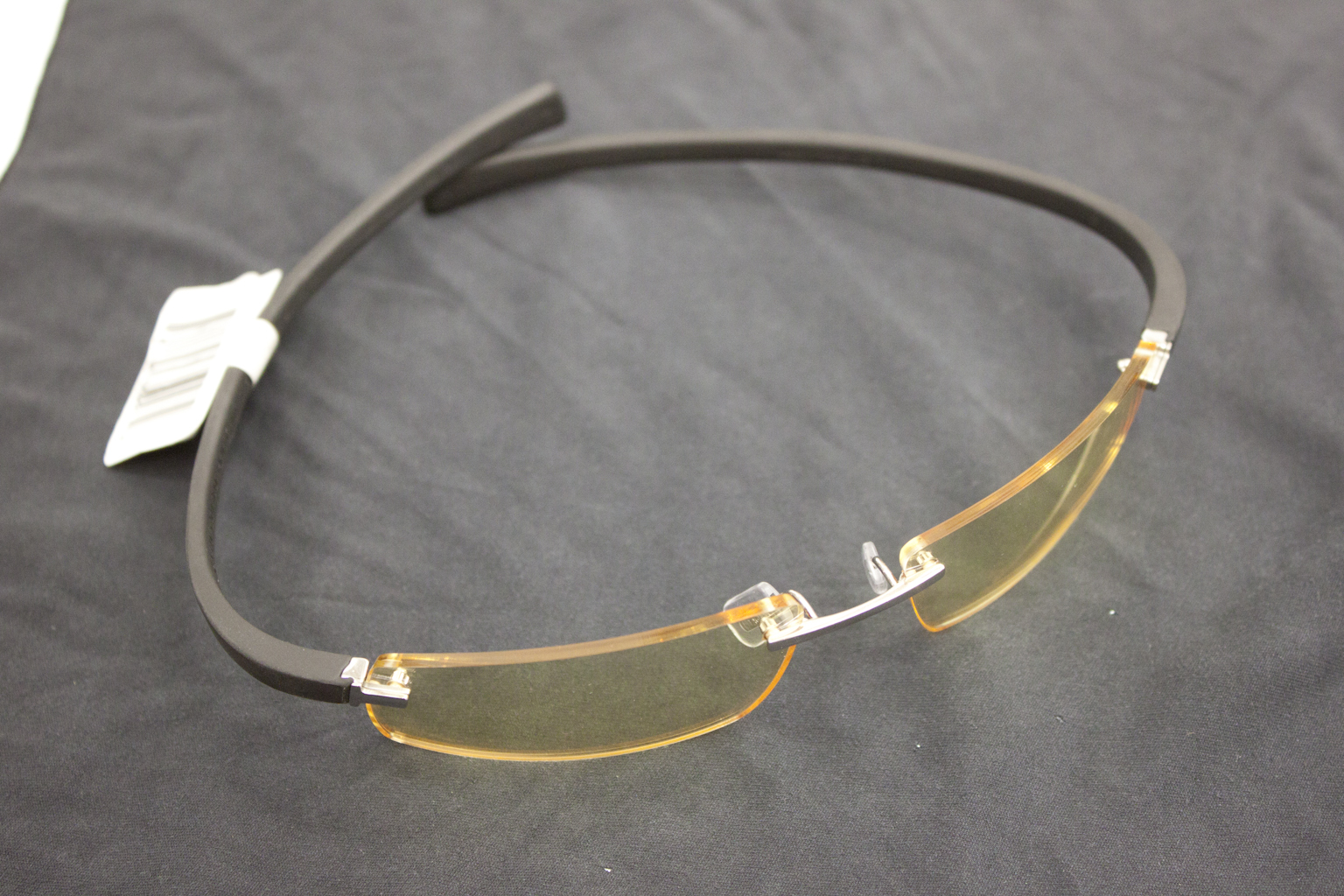 |
 |
The Tag Heuer lenses compensate for this effect and help to maintain the proper focus even in low light. Additionally the arms of the glasses are made from recycled F1 tires. Tag Heuer takes the left over material and removes all of the impurities until they are left with a raw form of silicon they mold this around a thin strip of titanium which give strength without adding too much weight. I tried these on and even in the brightly lit store I was shocked at how sharp everything was.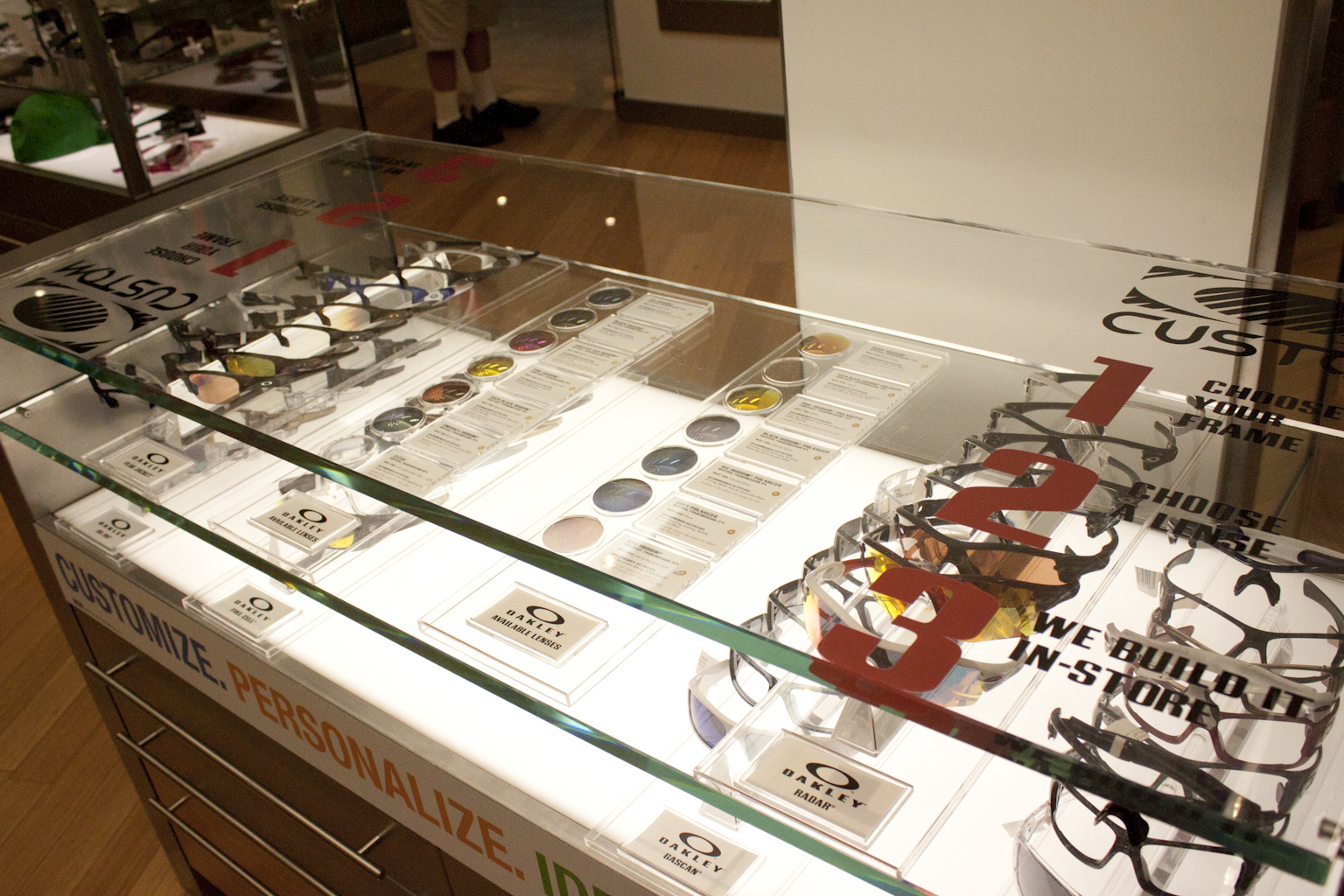
Next Cameron explained that not only could you chose an off-the-shelf product but that N3L could mix and match a few Oakley frames and lenses to pretty much build your own set of glasses. By that time I had receive the reply I was looking for. I was ready to make the purchase from N3L Optics. I have to say that despite my leaning toward a pair of Oakleys I ended up following the Immersive Display and the Explorer Chamber’s advice. I walked out with a pair of Revo Abyss glasses with polarized and amber lenses and a feeling that I was very well taken care of. I was even told that I could come back and get my glasses cleaned and adjusted for free, which is a nice touch.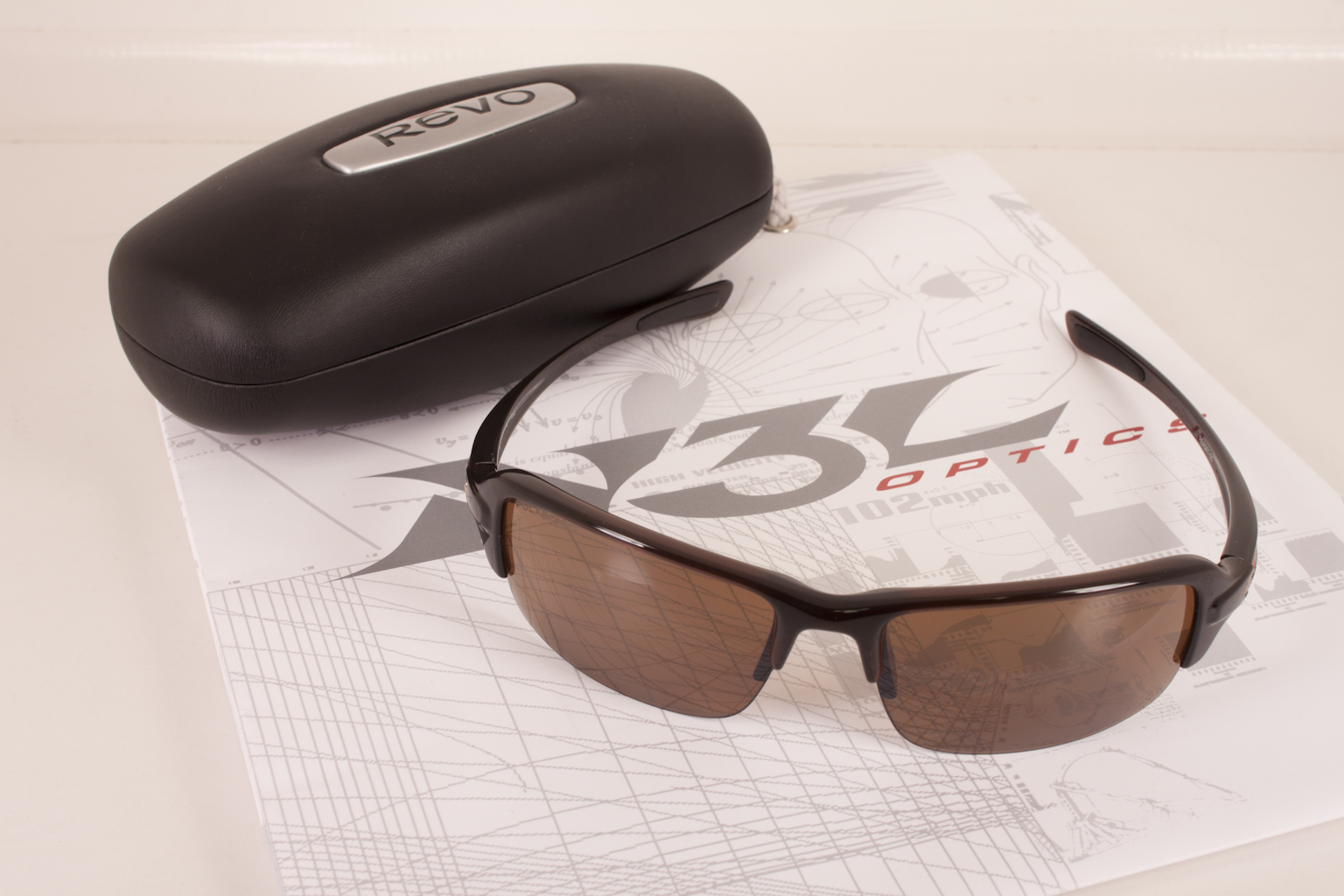
My trip to N3L Optics was a very positive one. The combination of human interaction from the moment I walked in combined with very well thought out technical devices (the Explorer Chamber is brilliant) gave me the upper hand in choosing the best product to suit my needs. It shows the proper way to use technology to enhance the customer experience as opposed to many places that go overboard with videos and music static displays and cheesy demos. I can say the N3L Optics certainly has an edge in a market where gimmicks are common (after a few minutes with the Explorer Chamber most of those gimmicks will suffer an epic fail and be discarded). I highly recommend going in to check them out if you live near one, or at least taking a look at their website to see what they are all about.


















